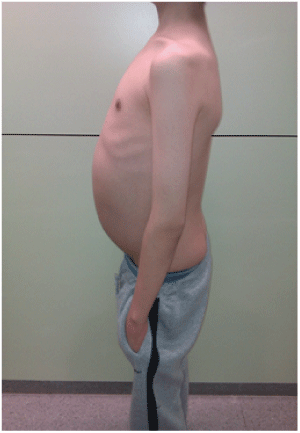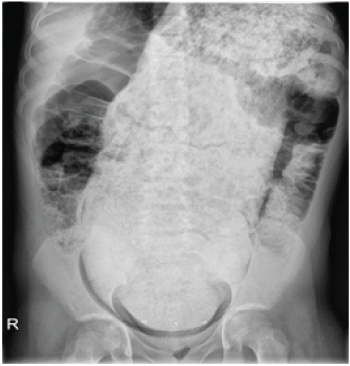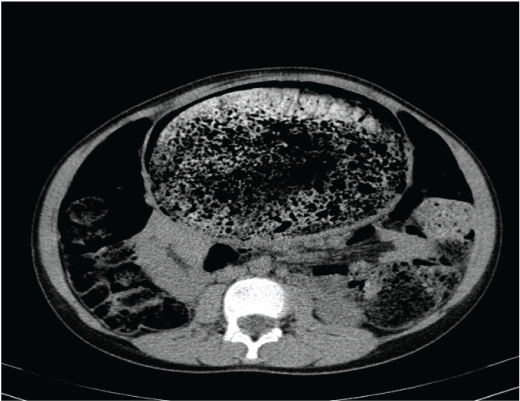Case Report Open Access
Chronic Constipation in Pediatrics - Not Always a Trivial Discomfort
Ciurans CC*, Garcia LB, Liñán MJL, Segura EB and Mejías AMServicio de ER Pediatric Hospital Health Consortium of Terrassa, Terrassa , Barcelona, Spain
- *Corresponding Author:
- C.Coderch Ciurans
Servicio de ER Pediatric Hospital Health Consortium of Terrassa
Terrassa, Barcelona, Spain
E-mail: claucoci@hotmail.com
Received date: Mar 07, 2016; Accepted date: Apr 20, 2016; Published date: Apr 26, 2016
Citation: Ciurans CC, Garcia LB, Liñán MJL, Segura EB, Mejías AM (2016) Chronic Constipation in Pediatrics - Not Always a Trivial Discomfort.J Community Med Health 6:415. doi:10.4172/2161-0711.1000415
Copyright: © 2016 Ciurans CC, et al. This is an open-access article distributed under the terms of the Creative Commons Attribution License, which permits unrestricted use, distribution, and reproduction in any medium, provided the original author and source are credited.
Visit for more related articles at Journal of Community Medicine & Health Education
Keywords
Constipation; Pediatrics; Gastrointestinal motility; Hipoganglionosis; Abdominal distension
Case Report
Gastrointestinal motility disorders and chronic constipation are common pediatric problems. Symptoms of abdominal discomfort are frequently encountered in the daily practice. Normal peristalsis depends on the interaction between muscles, nerve cells, and tendinous connective tissue of muscularis propria [1].
Constipation is one of the most frequent consultations in the pediatric emergency service and gastroenterology. The symptoms of it can be very variable, including recurrent abdominal pain, abdominal distension, chronic diarrhea, secondary encopresis and even urinary symptoms such as enuresis and urinary tract infections (UTI).
95% of the cases presenting with constipation have an idiopathic origin. They are classified as either functional (95% of the cases) or organic. The organic cases, are further divided into disorders of different nature: metabolic, endocrinal (hypothyroidism, diabetes insipidus, hypercalcemia), anal lesions, drug-induced disorders, myopathies (muscular dystrophies, megacystis, microcolon syndrome, secondary ischemic myopathy), collagenopathies (desmosis, connective tissue disorders) or neurogenic (Intestinal dysganglionosis such as Hischprung disease, hypogangilonosis, ganglioneuromatosis, neural dysplasia, spine disorders,…).
The diagnosis is a combination of a profound anamnesis, radiologic findings and anorectal manometry. However the final “gold standard” requires histopathologic evidence.
We report a case of a 13 years old teenager who presented in the emergency room with pollakiuria, diminished stream flow for the last two days and abdominal distension for one week. He refers long term treatment for encopresis. During the physicial exam an important abdominal distension with a painless left abdominal mass stands out (Figure 1).
Under suspicion of an abdominal tumor and not being possible to perform an abdominal ultrasound, an abdominal X-ray was performed instead. Abundant fecal material was shown in central abdomen reaching the left upper quadrant (Figure 2).
Digital rectal examination revealed fecaloma of hard consistency. The blood test discarded hypothyroidism, celiac disease. The patient was admitted to complete study with barium enema, ultrasound and abdominal CT, which globally demonstrated megarectum-megasigma with big fecaloma (Figure 3).
Enemas and rectal evacuation were started as part of the treatment. Rectal biopsies were performed providing the diagnosis of hypoganglionosis.
Hypoganglionosis is a rare dysganglionosis characterized by scarce and smaller ganglionic nerve cells in the intestinal wall. On the other hand, it's important to differenciate hypoganglionosis from Hischsprung’s disease, which is a congenital absence of intramural ganglion cells in the distal bowel. A rectal biopsy is currently the “gold standard” for diagnosing dysganglionosis when clinical symptoms are megacolon [2] and intestinal pseudo-osbtruction. The treatment should include a medical and surgical approach [3,4].
References
- Feichter S, Meier-Ruge WA, Bruder E (2009) The histopatology of gastrointestinal motility disorders in children. SeminPediatrSurg 18: 206-211.
- Fadda DB, Bengoa J, Figueroa M, Reyes H, Reddersen C (1981)Etiologic study of 50 children carriers of megacolon. Rev ChilPediatr 52: 315-317.
- Watanabe Y, Takasu H, Sumida W (2011) A preliminary report on the significance of excessively long segment congenital hypoganglionosis management during early infancy. J PediatrSurg 46: 1572-1577.
- Do MY, Myung SJ, Park HJ, Chung JW, Kim IW, et al. (2011) Novel Classification and Pathogenetic Analysis of Hypoganglionosis and Adult-onset Hirschprung’s disease. Dig Dis Sci 56: 1818-1827.
Relevant Topics
- Addiction
- Adolescence
- Children Care
- Communicable Diseases
- Community Occupational Medicine
- Disorders and Treatments
- Education
- Infections
- Mental Health Education
- Mortality Rate
- Nutrition Education
- Occupational Therapy Education
- Population Health
- Prevalence
- Sexual Violence
- Social & Preventive Medicine
- Women's Healthcare
Recommended Journals
Article Tools
Article Usage
- Total views: 13084
- [From(publication date):
April-2016 - Apr 11, 2025] - Breakdown by view type
- HTML page views : 12218
- PDF downloads : 866



